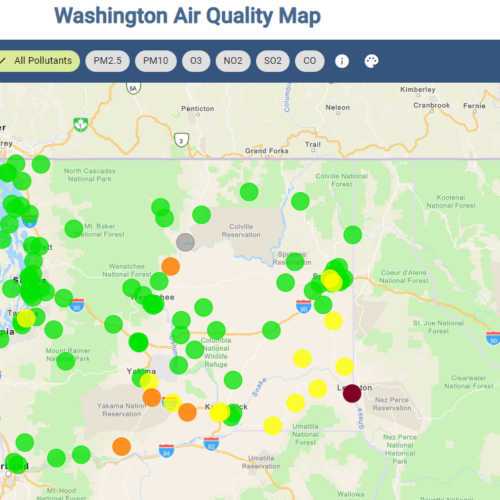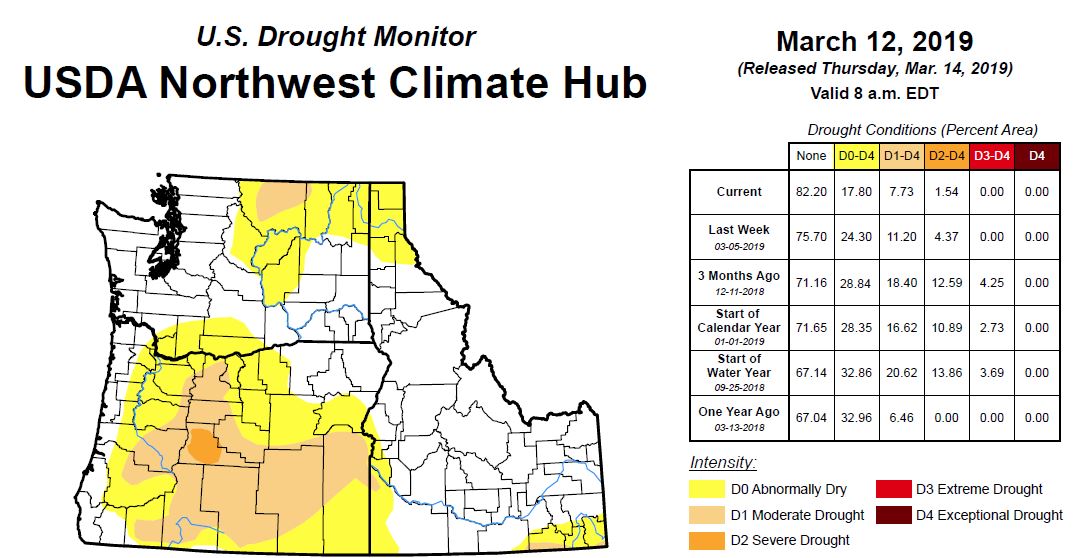
A Punch Of Late Winter Weather Means Diminished Drought Across The Northwest
Read On
According to a new federal drought monitor map, the long-running dry spell finally looks to be over in most of the Northwest.
The Washington and Oregon drought monitor maps have largely lost their orange and brown color coding — indicating more severe drought conditions. Heavy snows and precipitation in February and early March have made up the difference. That’s good news for ranchers, irrigators, river rafters and salmon.
Still, not all areas are seeing the benefits.
In north-central Washington’s Okanogan County, there’s still a splotch of tan on the map — meaning moderate drought. And the surrounding counties are still dry, along with the very southern and central part of the state.
Oregon is even drier — “abnormally” dry almost everywhere. With large swaths of moderate drought. And most of Deschutes County is still in severe drought. Still, that’s an improvement, and water managers are hoping the deep snowpack will melt out slowly.
Related Stories:
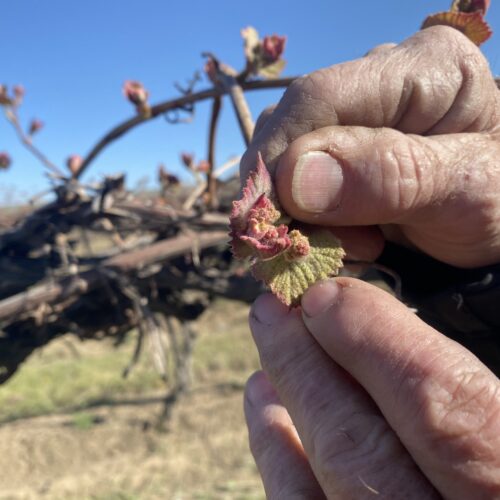
Drought expected to plague farmers in the Yakima Valley, Kittitas areas this summer
Jim Willard shows “bud break” on an old block of concord grapes eight miles north of Prosser, Washington. The baby leaves and buds start pushing out to become grown vines
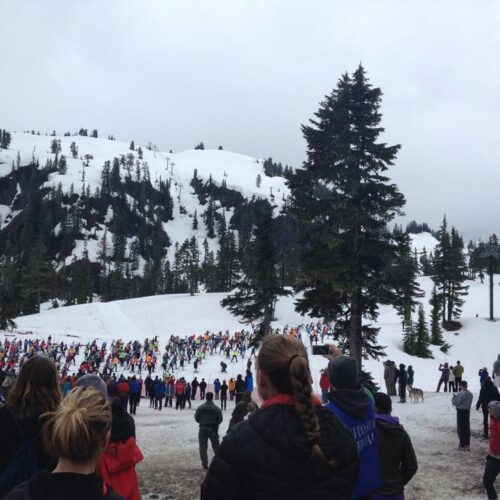
Nerves slippery for Washington’s Ski to Sea race
Cross country skiers line up at the start of the 2014 Ski to Sea race. (Credit: Courtney Flatt / Northwest News Network) Listen (Runtime 1:04) Read Snow-covered undulating trails will
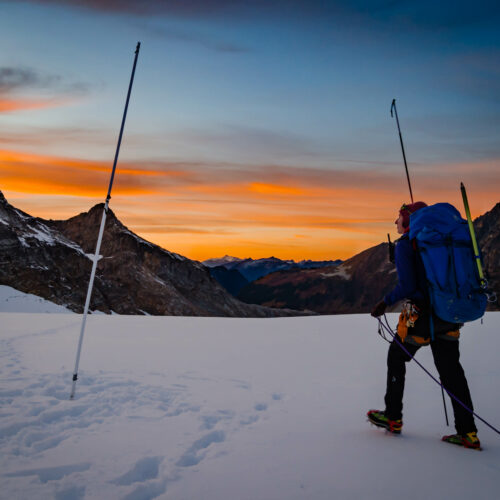
Spring snowpack levels in North Idaho lowest in 40 years
Erin Whorton, a hydrologist for the Natural Resources Conservation Service, measures snow on South Cascade Glacier in Washington. (Credit: Erin Whorton / NRCS) Listen (Runtime :58) Read The snowpack in






